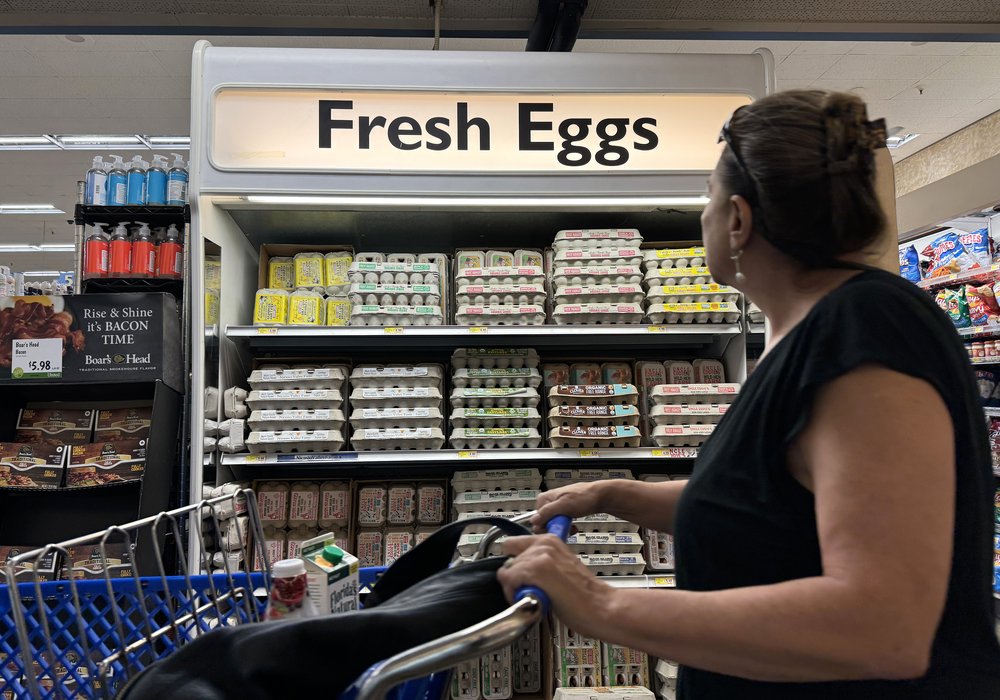NYC fights federal food aid cuts while study says 2M go hungry statewide
Nov. 26, 2024, 6:01 a.m.
City officials and anti-hunger organizations are looking to shore up funding for SNAP ahead of a new, GOP-led Congress.

New York City officials and local organizations that fight hunger are working together to oppose potential cuts to a federal program nearly 2 million people in the city rely on to help pay for groceries.
Federal lawmakers are running out of time to renew funding for the Supplemental Nutrition Assistance Program through the federal Farm Bill before the end of the year, ahead of a new Congress in January.
Republicans in the House have already advanced a version of the Farm Bill this year that would limit SNAP expansion over time, making less money available to those in need. Democrats have pushed back, but advocates worry the program will be even more susceptible to cuts if renewal is punted to next year, when Republicans will control both the House and Senate.
“SNAP is a really essential benefit and it's critical that we maintain it for the well-being of those who depend on it to feed their families every day,” said Molly Wasow Park, the commissioner of the city’s Department of Social Services, which administers SNAP benefits to residents in the five boroughs.
Congress is negotiating over the future of SNAP as food insecurity in New York is on the rise.
About 1.9 million residents statewide said they “often” or “sometimes” didn’t have enough to eat in surveys conducted between August and September of this year, a 76% increase from the same period in 2021, according to a report on food insecurity released Tuesday by Hunger Free America. The estimates are based on data from the U.S. Census Bureau’s Household Pulse Survey.
In the New York City metro area, which includes parts of New Jersey, Connecticut and Pennsylvania, nearly 1.7 million people reported not having enough to eat during the 2024 survey period, up 67% from 2021.
“This is really a marker of the sharp decline of the middle class in the New York metropolitan area and throughout New York State,” said Joel Berg, the CEO of Hunger Free America, a nonprofit based in New York.
He said he attributes the sharp increase in food insecurity over the past three years partly to the expiration of certain pandemic-era benefits such as the expanded Child Tax Credit.
One of the report’s recommendations — in addition to restoring the expanded Child Tax Credit — is for the federal government to strengthen, rather than cut, SNAP.
Bronx mom Emily Santisteven first enrolled in SNAP and a special food program for women with babies earlier this year, when her husband had a health crisis that forced him to quit his job as a chef. She said the $300 or so a month she receives is critical to being able to afford groceries for herself, her husband and her 6-month-old son.
But even then, she said, it’s hard to make it last, given how much grocery prices have gone up.
“Even when you budget super-well and shop the sales and everything, it's hard to get things that aren't processed and boxed and actually make healthy food throughout the month,” Santisteven said.
In 2023, New York SNAP recipients received an average of $196 per person each month. The amount allotted to individuals and families varies depending on income and whether anyone in the household is a child, elderly or disabled.
Advocates began organizing against potential SNAP cuts earlier this year when the House Agriculture Committee passed a Republican-supported bill that would prevent the program's funding from being adjusted over time to reflect the changing cost of a healthy diet.
Although adjustment for inflation would still be permitted under the bill, the proposed change would ultimately siphon about $30 billion from the SNAP budget over the next decade, according to an analysis from the Center on Budget and Policy Priorities.
“That means that over time, the value of SNAP diminishes and it becomes harder and harder for low income people to achieve food stability,” Park said. “That has an enormous impact on low income households, of course, and it also has an enormous impact on the economy of New York City. People are spending their benefits here.”
Food pantry use in New York City is also still higher than it was pre-pandemic, and Park noted that a reduction in SNAP benefits could lead to a bigger strain on the emergency food system.
Without the provision that allowed for SNAP benefits to increase in recent years, the average enrollee would be getting about $4.80 per day to pay for groceries, rather than the current $6.20 a day, according to the Center on Budget and Policy Priorities.
This article was updated with additional information about SNAP recipients and hunger in New York.
Food-insecure New Yorkers feel the squeeze from rising grocery prices Mayor Adams reverses plan to slash NYC emergency food funds as part of budget deal Child hunger is rising in NYC. Mayor Adams wants to cut emergency food funds in half.